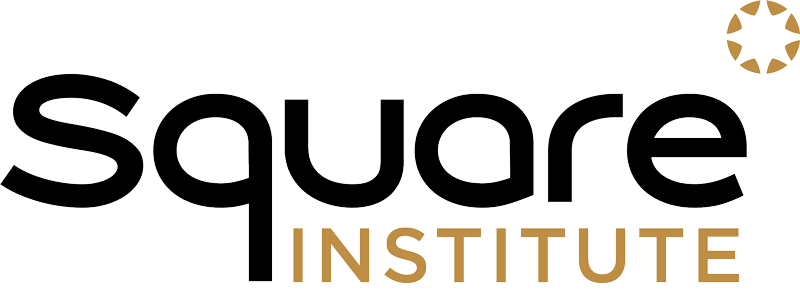
Agefi Luxembourg
– Octobre 2022
The European Supervisory Authorities (ESA) observe a rising consumer activity and interests in crypto-assets , despite the limited oversight of them. From a recent ECB survey, it is estimated that 10% of the Belgian households may own crypto-assets. However, dealing in crypto-assets is not without risks. The European Union (EU) is taking steps in setting regulatory standards for digital assets, which would bring more harmonization and clarity in responsibilities in the Union.
Regulatory challenge
After the AMLD5 implementation in May 2020, each EU Member State had created its own regulatory framework for crypto-asset transactions, which resulted in regulatory fragmentation in the EU. The main challenge is that, when individuals deal in crypto-assets, they are not covered by the current EU protection rules. The ESA warn that many crypto-assets are still highly risky and speculative. Hence, businesses dealing with crypto-assets should better inform investors about risks, costs and charges.
In addition, the widespread use of crypto-assets without proper regulation could drive financial instability, market manipulation and other financial crimes. Given that the crypto transactions are usually anonymous, cryptocurrencies could be widely used for criminal activities. In the wake of the Ukraine war, the EU countries have been taking restrictive measures, such as limiting crypto-asset trades with Russian entities.
MiCAR
On 24 September 2020, the European Commission published a draft regulation on crypto-assets: Regulation on Markets in Crypto-assets (MiCAR) . The European Parliament adopted the Commission’s proposal on 14 March 2022. This triggered the start of the negotiations between the European Commission, the Council and the European Parliament (known as a trilogue).
The MiCA proposal is designed to set uniform rules on transparency, disclosure, authorization and supervision of transactions. Risks and costs should be better communicated to the consumers. The regulation also intends to regulate operation, organization and governance of the issuers. Moreover, the draft legislation includes measures against market manipulation, money laundering and other criminal activities. Hence, this legal framework would support market integrity and financial stability.
Most draft provisions did pass the European Parliament’s vote. However, the provision related to sustainability in crypto-asset mining was eventually removed from the draft. This provision was set to ban crypto-assets that rely on “proof of work” , as crypto mining consumes enormous quantity of energy, resulting in a high environmental footprint and electronic waste . According to the CCAF estimate , the energy consumption of Bitcoin equals that of a small country. That is why, the European Parliament asked the European Commission to prepare new rules to include crypto-asset mining activities, that contribute considerably to climate change, in the classification system for sustainable activities.
On 30 June 2022, the trilogue negotiators reached a deal on the MiCA proposal. The next step is to have this provisional agreement approved by the Council and the Parliament before undergoing the adoption procedure by the EU Member States. The EU is not alone in this area though. On 9 March 2022, the United States government released an executive order, requesting a policy recommendation to address the benefits and risks of the digital assets. Similarly, the United Kingdom government announced in April some steps to bring digital assets under regulatory framework.
Other challenges
Even in the process of having MiCAR implemented in the near future, there are still some other (non-regulatory) challenges for crypto-assets. For example, the digital space is virtually global. On the other hand, the government authority can only act within its border. Aside from issuing warnings, regulators cannot stop EU citizens from trading with crypto-asset service providers outside the EU. When the MiCA Regulation has been adopted, only licensed providers will be allowed to offer crypto-assets and to operate crypto-exchange(s) in the EU. Until then, the providers have all free play.
Another challenge is the lack of standardized pricing methodologies for crypto-assets. These assets are not pegged to a certain currency, nor to a country or exchange. The price varies largely by supply and demand, which makes it unpredictable. In addition, the pricing of crypto-assets is very dispersed and involves likely both on- and off-chain data , which will further complicate the pricing process.
Furthermore, there are still data gap issues related to interlinkage with the regulated financial sectors. For instance, limited information is available on the bank’s holding of crypto-assets, or on lending for the purpose of investing in crypto-assets. Another area relates to transactions with cards supporting crypto-assets, merchants accepting cryptocurrencies and the value of withdrawal transactions from crypto-asset ATMs. How will traditional systems communicate proficiently with blockchain? These data gaps make it difficult to assess the full scope usage of crypto-assets in the financial system.
From an analyst’s point of view, it is a good step forward to have the decentralized digital assets (partially) regulated. The market for crypto-assets is getting bigger and might be an interesting investment replacement for the traditional financial products. Nevertheless, clients should remain cautious, as these are still very risky and there are still many unsolved concerns. We should keep an eye on the further development of the digital asset regulations.
Conclusion
Crypto-assets have gained increasing interests in the last few years. Though, those virtual assets are not riskless. In an attempt to regulate the crypto-assets, each Member State had created its own regulation, which led to regulatory fragmentation in the EU. Without a harmonization of the financial rules on EU level, it would be difficult for the EU citizens to properly deal in crypto-assets.
MiCAR is an important step in reducing regulatory uncertainty and to harmonize regulations on EU level for crypto-assets. The provisional agreement is already at the next phase, waiting for the approval from the Council and the Parliament. It is just a matter of time that the regulation will come into force. However, there are still other challenges not covered yet by MiCAR. Well, Rome was also not built in a day.
Par Andrew Tang, Senior Consultant at Square Management.
AUTRES ACTUALITÉS EN RISK & FINANCE
Banque à réseau versus banque à zéro : qui écrira l’histoire ?
Paru dans Les Echos
EUDIW : enjeux et conséquences du portefeuille d’identité numérique de l’UE sur le secteur bancaire
Paru dans Le Journal Du Net
L’inclusion financière, un levier pour les banques
Paru dans Revue Banque




